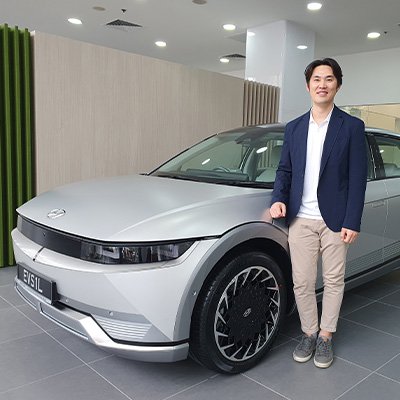Semiconductor companies are among the enterprises that have pioneered and used advanced technologies like AI and automation to be more efficient and competitive in their manufacturing operations. For example, GlobalFoundries and STMicroelectronics are using AI predictive maintenance, aiming to substantially reduce production tool downtime. Micron and Infineon are also part of the coveted World Economic Forum’s Global Lighthouse Network, in recognition of efforts undertaken within their Singapore operations to scale Fourth Industrial Revolution technologies. Singapore is further catalysing AI activities here through an investment of more than S$1 billion over the next five years into AI compute, talent and industry development. This includes putting in place enablers to support companies seeking to use GenAI to unlock productivity gains or to implement customised GenAI applications with tech partners to meet their business needs.
5. Supporting manufacturers to operate more sustainably
Singapore is already partnering with manufacturers to implement best-in-class greenhouse gas abatement and energy efficient systems. Beyond such efforts, companies are piloting novel emission abatement solutions to achieve further decarbonisation. STMicroelectronics for instance is working with SP Group on Singapore's largest industrial District Cooling System, to cool one of STMicroelectronics’ manufacturing plants and its office areas. When ready in 2025, it will help STMicroelectronics achieve 20 per cent savings in annual cooling-related electricity consumption, and reduce ST’s carbon emissions by up to 120,000 tonnes per year. Singapore is also improving access to cleaner energy – through regional power grids that will facilitate the import of low-carbon electricity and exploring low-carbon alternatives such as hydrogen, geothermal and carbon capture, utilisation and storage. Read more.
Read about the latest semiconductor investments in Singapore
Mar 2024: AST, a Singapore-based subsidiary of TOPPAN Holdings Inc., broke ground on a Singapore facility to produce high end substrates and develop advanced technologies to meet global demand.
Jun 2024: VisionPower Semiconductor Manufacturing Company, a joint-venture between Vanguard International Semiconductor Corporation and NXP Semiconductor, announced that it will build a ~US$7.8 billion (S$10.5 billion) wafer manufacturing plant in Singapore for automotive, industrial, consumer and mobile device markets.
Siltronic opened its new S$2.9 billion production facility for 300mm wafers, making Singapore its largest production site globally. Hear from CEO Dr Michael Heckmeier on what makes Singapore a strategic partner for Siltronic.
Pall Corporation, opened a new US$150 million (S$202 million) state-of-the-art facility in Singapore to produce microelectronics filters for advanced node semiconductor manufacturing.
MediaTek has committed to investing S$500 million in Singapore over the next five years. This will go towards furthering R&D capabilities in next-generation system on chip (SoC) technologies.
Sep 2024: NTS Group Group, a contract manufacturer that serves key industries like semiconductors and MedTech, opened its new integrated assembly and manufacturing plant with a production and office space in Singapore.
Oct 2024: KLA completed the first phase of its US$200 million Singapore operations expansion to address the increasing demand for process control solutions.
Nov 2024: Applied Materials hosted a summit in Singapore on the next generation of energy-efficient computing and announced plans to expand its global EPIC innovation platform to accelerate the commercialisation of advanced packaging chip technologies.
Dec 2024: VSMC broke ground on its first 300mm fab in Singapore, with initial production slated to begin in 2027.
Discover what Singapore offers manufacturers seeking a go-to-market strategy for Southeast Asia. Download our advanced manufacturing guide today.
This article was updated on 5 Dec 2024.






